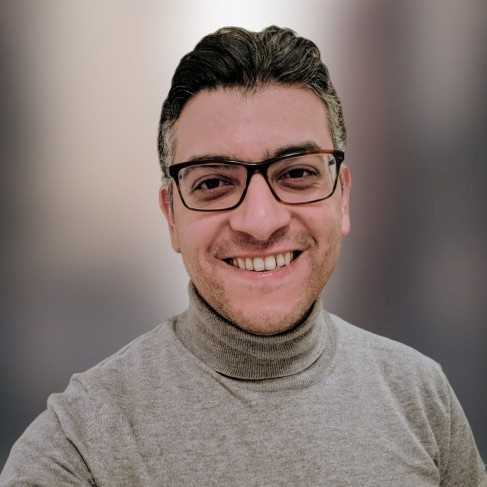Asking better questions is an extremely important skill. Much of what we do depends on building a good understanding to make better decisions. A good decision is one that doesn’t need changing (Shishir Mehrotra, 20VC) and those decisions are usually only made when there is a common understanding with those involved. So how do we build that understanding?
It’s important to realise, oftentimes, when we are engaged in dialogue, many people focus more on what they want to say next, waiting for their opportunity to jump. Stephen Covey, author of 7 Habits of Highly Effective People wrote:
“Most people do not listen with the intent to understand; they listen with the intent to reply.” ~ Stephen R. Covey.
In this dynamic you simply have people talking at each other as opposed to real communication. Good communication is about the message sent and the message received and it is the responsibility of both parties involved.
One of the ways to improve our conversations is through active listening. Active listening is the process of seeking information with a genuine interest in what your counterpart is saying to improve your understanding. The TEDW model is a framework you can use as a forcing function to help your active listening and give opportunities to your counterpart to better communicate their position.
Introducing TEDW Model
The TEDW model was something I was introduced to a few years ago by the very talented Nikki Anderson. We were specifically discussing how to run customer interviews to draw out meaningful insights to help build better products. Nikki’s point was when communicating, the aim should to be encourage as much story-telling as possible. Open-ended questions are a critical tool to do this.
Questions come in two groups — closed questions and open questions.
Closed questions generally have a simple answer (yes or no) and close down conversation. They don’t give other person an opportunity to clarify or explain. It is important to note closed questions are not inherently bad but do have limited power to build understanding and rapport.
Open questions encourage dialogue and expression. Coupled with active listening (a genuine interest and effort in appreciating what someone says), they are an incredibly powerful tool to build an understanding of the other person’s position, idea, or argument.
The Model
TEDW is an acronym standing for:
- Tell me more…
- Explain…
- Describe…
- Walk me through…
These four phrases are excellent prompts for asking open-ended questions and have almost limitless applications. Since first learning the concept, I’ve used the model in so many situations it has become a key part of my communication toolbox.
I use each of these prompts slightly differently:
- Tell me more is a general invite to elaborate on a previously mentioned point. I use this when someone has said something interesting and I’m curious about it. e.g. “You said you feel the grooming is the most important Scrum ceremony, tell me more about that” or “You said you thought you didn’t answer the stakeholder questions well in the Roadmap review, tell me more about that”.
- Explain and Describe are used to get much more detailed and pointed information on an established point. “Please explain to me the role of a standup,” “describe the key skills of a Product Manager,” “explain why you clicked on that link.”
- Walk me through is a good prompt to understand steps or a process flow and can be applied to both theoretical and actual timelines. This is particularly useful in complex topics when you want to understand how an individual or team arrived at a point, as it helps you understand the thought process or situations that occurred in the past so you have a common understanding e.g. “Walk me through the last time you booked travel,” “walk me through how you calculated the return on investment of this new pricing model,” “walk me through the conflict with Bob”.
The reason these are so powerful is because one of the biggest challenges we face as humans is our natural desire to fill in our the gaps of information, often with our own assumptions. Unfortunately, we’re not that good at it. (NB: this is a theme that Daniel Kahneman explores in Thinking Fast and Slow — a highly recommended read.)
These prompts act as a forcing function to ask inquisitive questions and gives your conversation partner the opportunity to fill in those details for you with what they mean instead of what you think they mean. This is why TEDW is so powerful.
The model can be applied to many of the situations you come across as a knowledge worker — working with stakeholders, 1:1s with your reports, hiring interviews and when doing research with customers. On a more personal level, I’ve even used this in personal relationships with my partner because it’s such a powerful communication tool.
Using TEDW
Aligning with Stakeholders
It seems one of the most common discussions we have in the product community is our relationship with our stakeholders. However, I find that difficult stakeholders is the wrong frame of mind. I’ve written you shouldn’t attribute to malice what you attribute to misalignment and TEDW is a great tool to build that alignment.
The TEDW model provides a prompt in your discussions with your stakeholders. For example, if a stakeholder comes to you with a very specific solution. The TEDW model helps you build your understanding of why they think this is the right feature to build. Going through this process can help you draw out the assumptions and context to build alignment.
Hiring Interviews
There are thousands of books and articles out there that look at the process of interviewing candidates. I don’t profess to have this mastered but I did note a marked improvement in how I assessed candidates after introducing the TEDW. The reason for this is two fold.
First, you’re able to probe beyond surface-level or buzzword answers to better evaluate the depth of knowledge. If a candidate gives an interesting answer, simply following up with “[key point], tell me more about that…” will draw the candidate to elaborate on their position. It is normally these second or third layer answers that are a better representation of knowledge.
Second, you give the candidate to more space elaborate on their position instead of relying on your biases to make potentially incorrect connections. Humans have a lot of biases (I recommend Growth.Design’s pysch for a summary) and interviewers are no different. The open nature of the questions help you create an environment in which the candidate can best articulate themselves.
Customer Interviews
Given this was the situation I originally learnt this model, it’s important to call-out. Running effective customer interviews is a real challenge. Customer interviews can either be generative (problem space) or evaluative (solution space) and TEDW can be applied to both.
Much like with hiring interviews, the model helps us break our own biases and create the right environment for you to be more receptive to qualitative insights your customers offer you.
I’d recommend checking out Nikki Anderson’s extensive writing on User Research for a much more comprehensive review.
Manager One-on-Ones
It’s very easy for your 1:1s with your reports to slip into a status update meeting. Generally speaking, that’s not an effective use of your time in those sessions and instead you want to be focused on the the personal and career development of your report.
The TEDW framework allows you to explore topics such as career ambitions, current challenges (and successes), reinforce learnings and get insights into the day-to-day of members of your team. Remember, TEDW incentivises active listening and broader understanding. By working with the model, you can become more empathetic and informed as to what your team actually thinks and feels instead of the facade of a Red/Amber/Green status tracker. With that understanding, you can be a much more effective and empowering manager that your team will trust and respect.
And personally
Fundamentally, the TEDW model is a framework for having more meaningful conversations. My fiancé and I use the prompts with each other, particular in a time of conflict when emotions run higher. The prompts put us both into the mode of active listening and genuinely understanding the words and thoughts of the other person instead of simply trying to respond or convey our own position. Note you can replace fiancé above with colleague and the sentence still works. It’s a powerful tool.
Wrapping Up
When getting started, you can use a post-it note on your monitor (easier during the times of COVID) as an ongoing prompt or pre-filling your note taking app with the acronym at the topic.
It takes time to build the habit of using TEDW but I have seen it repeatedly lead to better conversations. My main piece of advice to combine the different prompts in a conversation. You’ll find the information begins to ladder allowing deeper conversations and more meaningful insights with your colleagues, customers, reports and partners.


